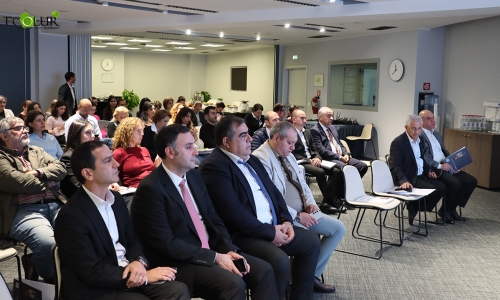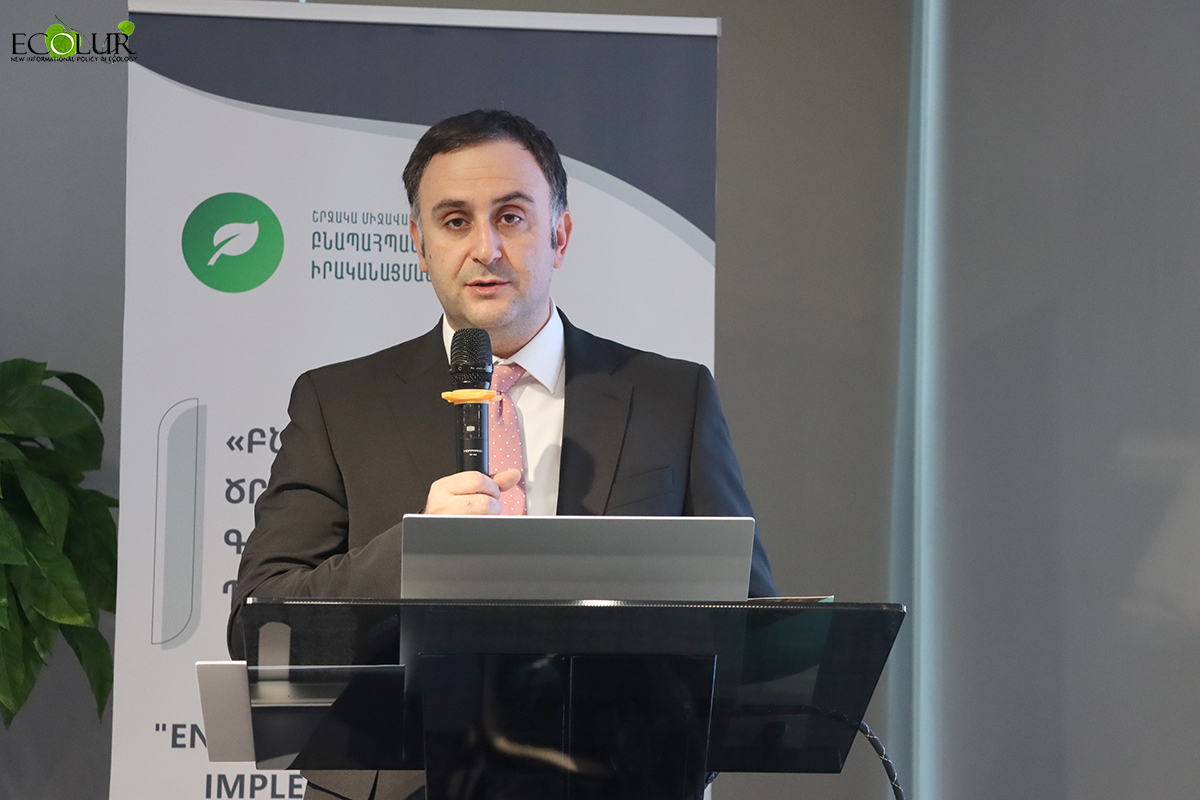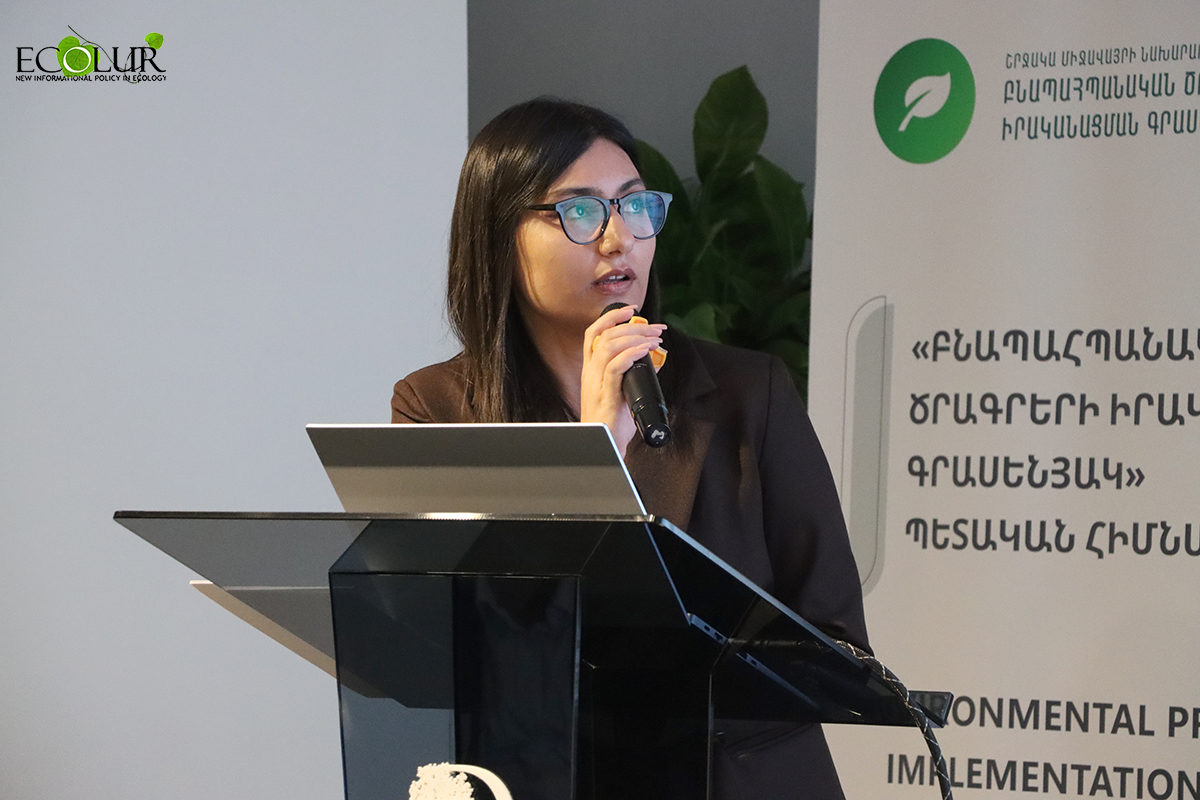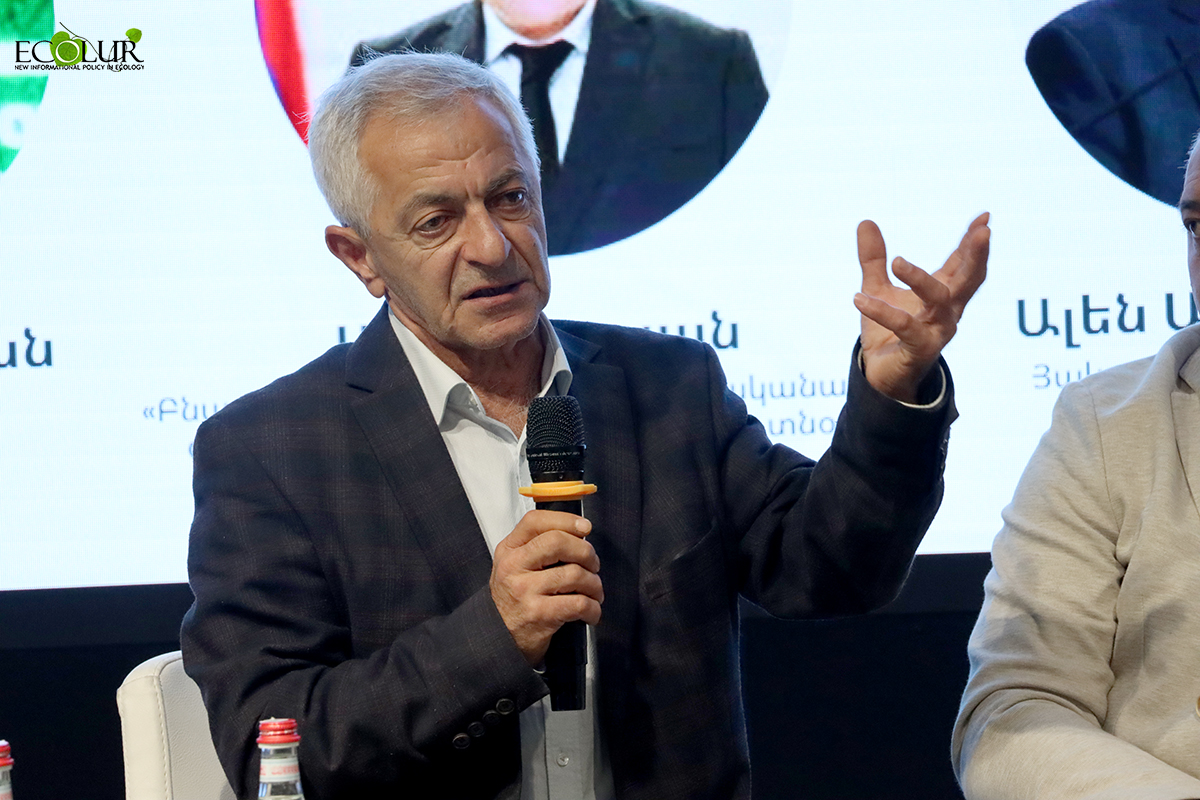

On October 13, 2025, in Yerevan, the final workshop of the grant program “Support for Early Actions in the Context of the Global Biodiversity Framework” was held.
During the final workshop, participants presented the activities implemented within the framework of the program, as well as the national goals and targets defined under the developed strategy.
Welcoming remarks were delivered by Aram Meymaryan, Deputy Minister of Environment of Armenia, and Armen Yesoyan, Director of the Environmental Projects Implementation Office.
Program Coordinator Margarit Gasparyan noted that the program’s activities began in August 2024.
“During the 15th Conference of the Parties (COP15) to the Convention on Biological Diversity, the Global Biodiversity Framework was adopted, and countries faced new obligations to align their policy frameworks, strategic objectives, and targets with this new framework. The main goal of the program was to provide technical and financial support to the Parties to the Convention so that their national strategies, action plans, targets, monitoring frameworks, and financial planning correspond to the global biodiversity framework,” said Gasparyan.
Senior Biodiversity Expert Arsen Gasparyan presented the strategic goals and national targets defined under the National Biodiversity Strategy and Action Plan (NBSAP).
He noted that the developed document is the main national-level implementation tool of the Convention on Biological Diversity.
“This tool must align first and foremost with the Convention’s vision, mission, long-term goals, and 23 global targets. We have done everything to ensure that Armenia’s NBSAP meets the expectations of the international community and the obligations of a Party to the Convention,” emphasized Gasparyan.
According to the national vision, by 2050, Armenia’s rich biodiversity will be preserved and used sustainably, degraded ecosystems will be restored, and will provide ecosystem services necessary for human well-being.
The document defines 5 strategic goals, 30 national targets, and 110 actions.
Referring to the national targets, Gasparyan highlighted those that are central to both national and international strategies:
“According to Target 2, by 2030, 20,000 hectares of various degraded ecosystems must be restored. These include forest, wetland, and pasture ecosystems. We lack baseline data and do not yet know which ecosystems are degraded. We have tried to obtain some quantitative indicators based on available data and access since measurable targets and actions are expected from us.”
He noted that the backbone of the strategy is the conservation of terrestrial and aquatic ecosystems by 2030 — aiming to bring the total to 30% of the country’s territory, achieved through well-connected and fairly managed protected areas and other effective area-based conservation measures (OECMs).
Gasparyan also addressed the problem of ecosystem pollution:
“We attach great importance to the pollution of Lake Sevan’s ecosystem. By 2030, phosphorus and nitrogen pollution in Lake Sevan must be reduced by at least 30%. Another target requires that by 2030, the risks and negative impacts of pollution caused by pesticides, hazardous chemicals, and plastics on Armenia’s river ecosystems and their functions be reduced,” he said.
One of the strategy’s targets is to increase the resilience of forest landscapes to climate change.
“We also have an international commitment to the creation and restoration of forest ecosystems - by 2030, to increase forest cover to 12.9%. It’s an ambitious goal, but we have tried to develop actions within its scope that correspond to our national priorities,” Gasparyan noted.
Following the presentations, panel discussions were held, focusing on strategic biodiversity planning and Armenia’s preparation process for COP17.
The panel discussion “Strategic Biodiversity Planning: COP17 Preparations in Armenia” featured Armen Yesoyan, Director of the Environmental Projects Implementation Office; Allen Amirkhanyan, Director of the AUA Acopian Center for the Environment; Mari Chakryan, National Coordinator of the Aarhus Convention; and Aram Aghasyan, Expert at WWF-Armenia.
Allen Amirkhanyan stated that COP17 represents a major opportunity for Armenia to elevate the global biodiversity agenda and strengthen Armenia’s role at the international level.
He emphasized that Armenia should be prepared not only logistically (hotels, security, transportation) but also substantively, by increasing public awareness.
“During its COP17 presidency, Armenia should not focus solely on national issues but should have a global agenda, presenting worldwide approaches to biodiversity,” he said, emphasizing the involvement of civil society, NGOs, and the professional community in properly representing Armenia at COP17.
Agreeing with Amirkhanyan, Aram Aghasyan noted that Armenia should highlight not only its achievements but also its environmental challenges.
“COP17 is an opportunity to present scientific and environmental achievements and to showcase that Armenia has rich biodiversity with thousands of species,” he stated.
According to Aghasyan, COP17 could serve as an opportunity to attract international partnerships and financial resources.
Mari Chakryan informed that a COP17 Organizing Committee has already been established, which includes NGOs to ensure a participatory approach.
“Awareness and participation processes are underway, including the involvement of youth and media. It is necessary to form the correct public and media perception so that people understand Armenia’s role as a presiding country, not merely as an organizer,” she said.
According to Chakryan, negotiations are currently in progress with specialized organizations to develop a communications strategy to ensure effective information dissemination.
Finally, Armen Yesoyan noted that COP17 will provide Armenia with an opportunity to improve environmental thinking and awareness.









October 21, 2025 at 15:13
